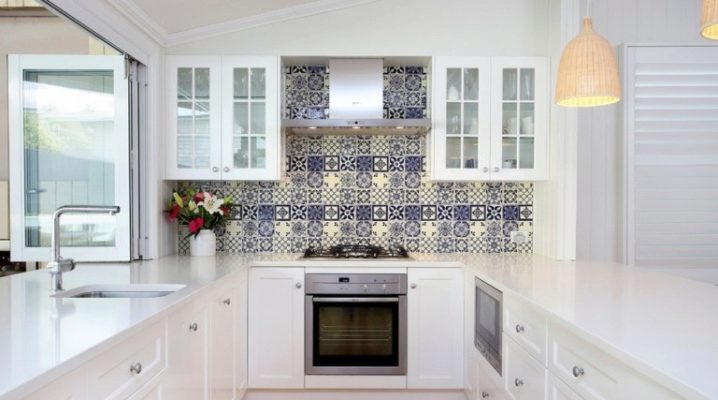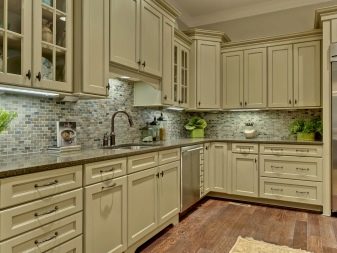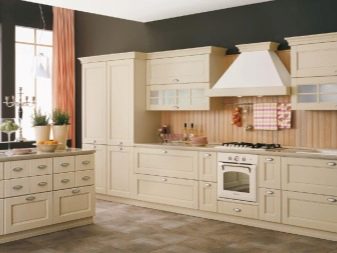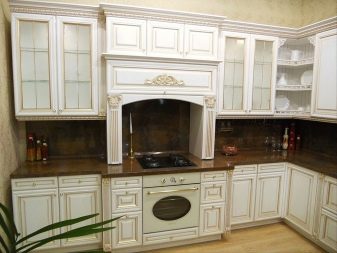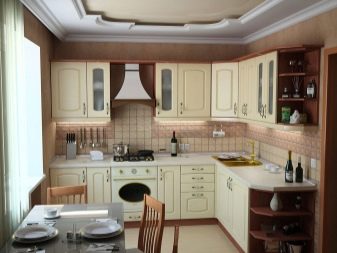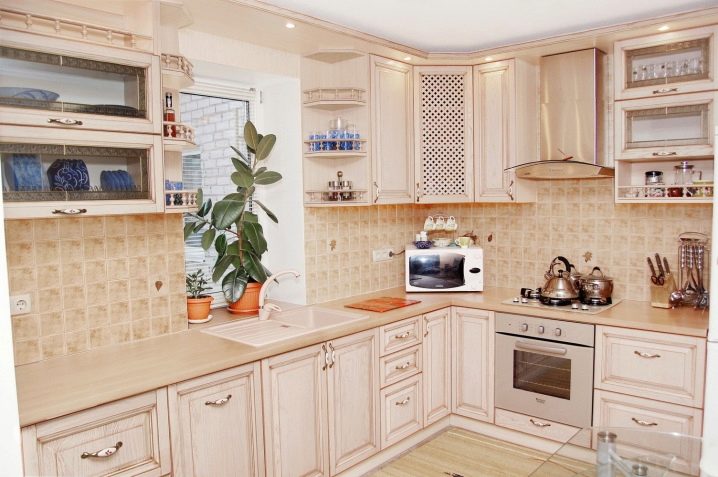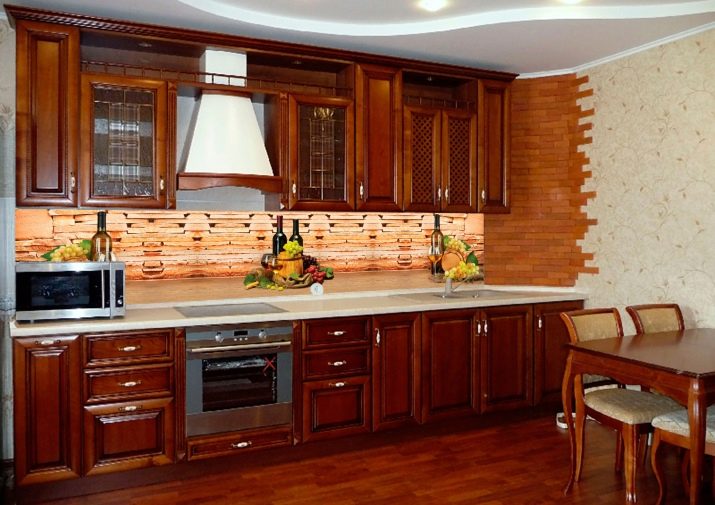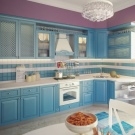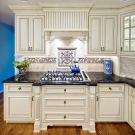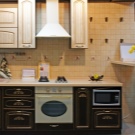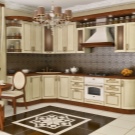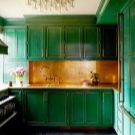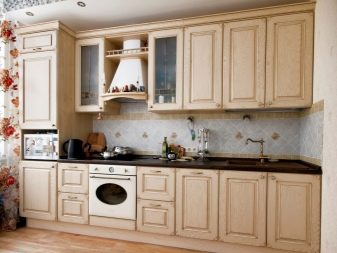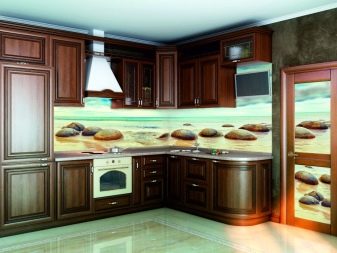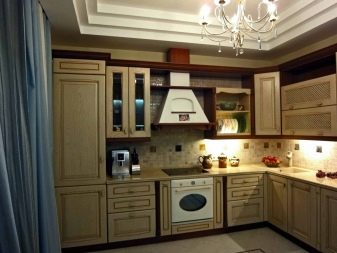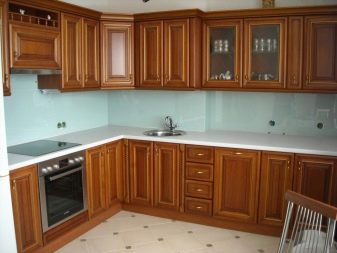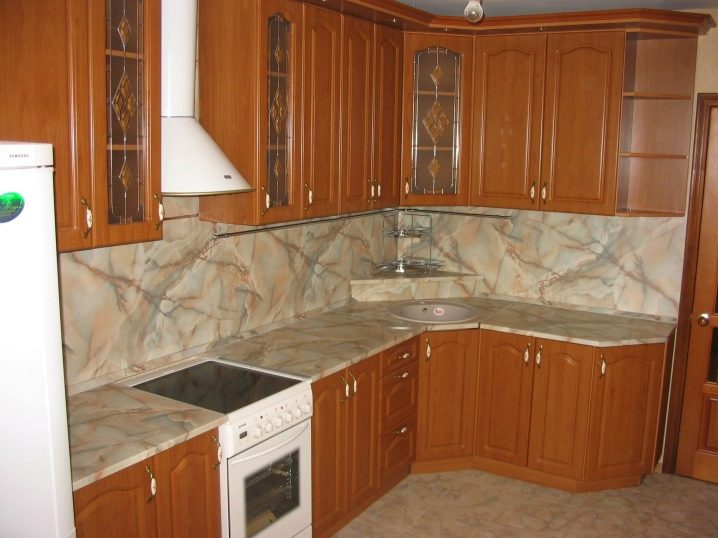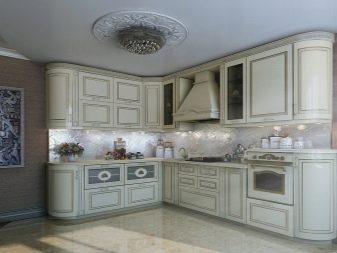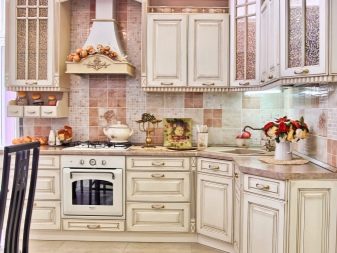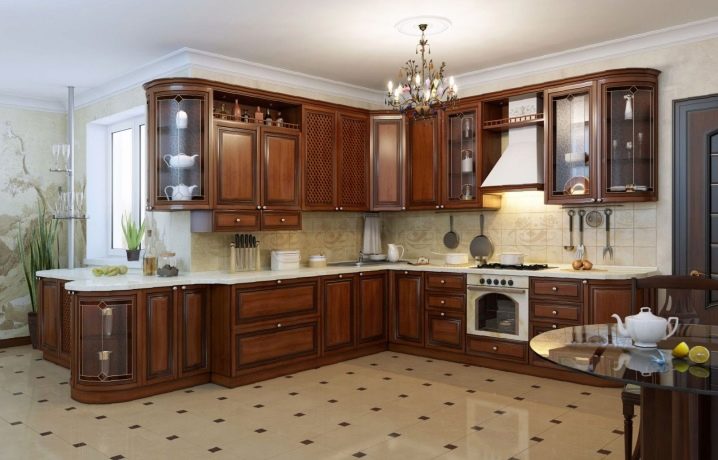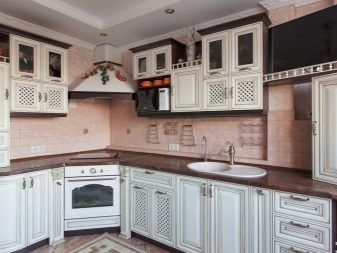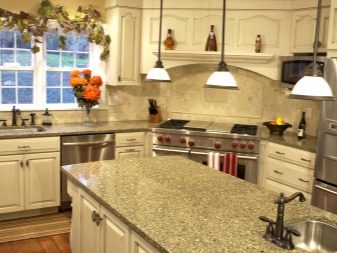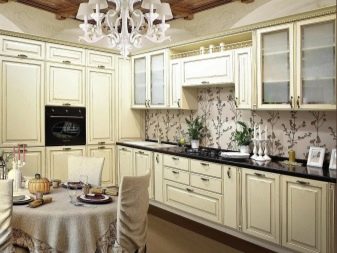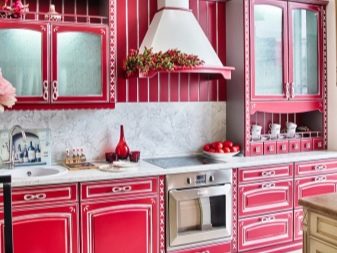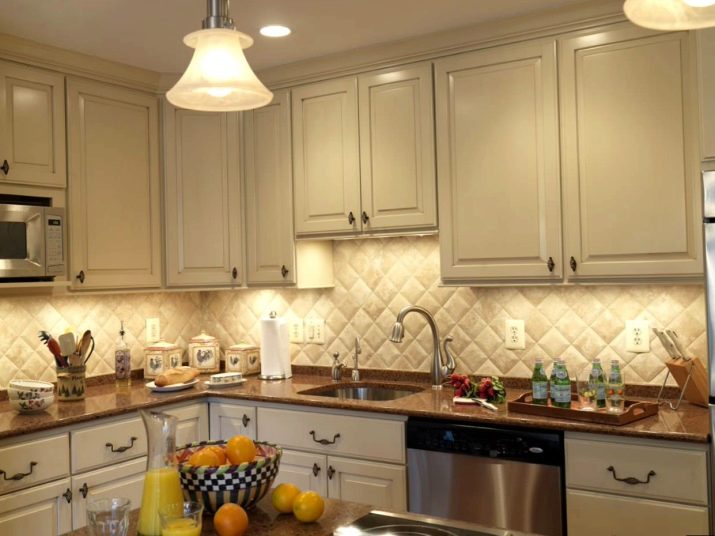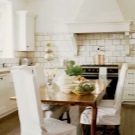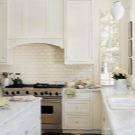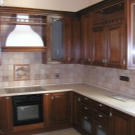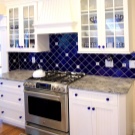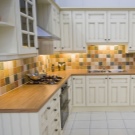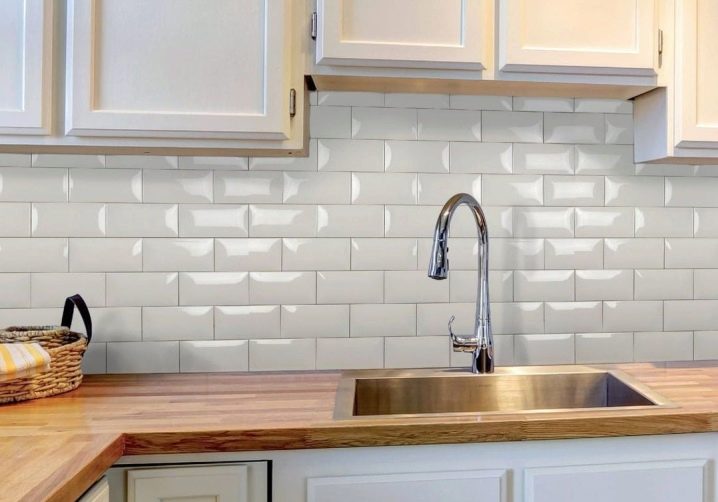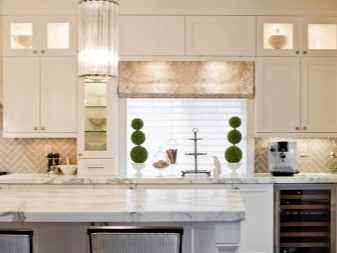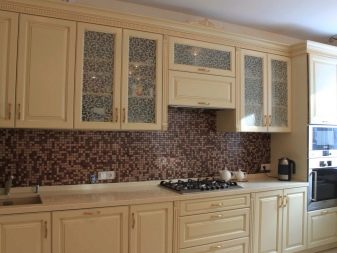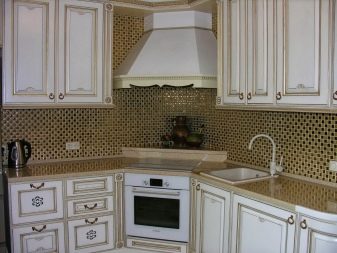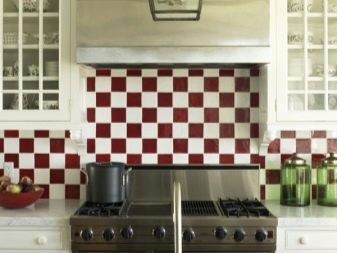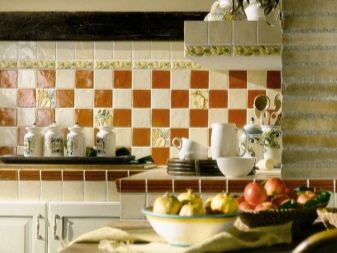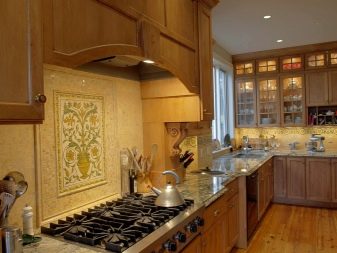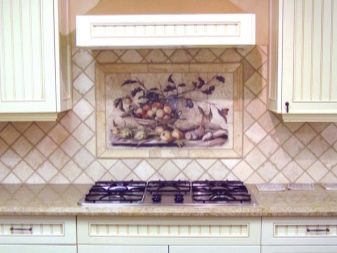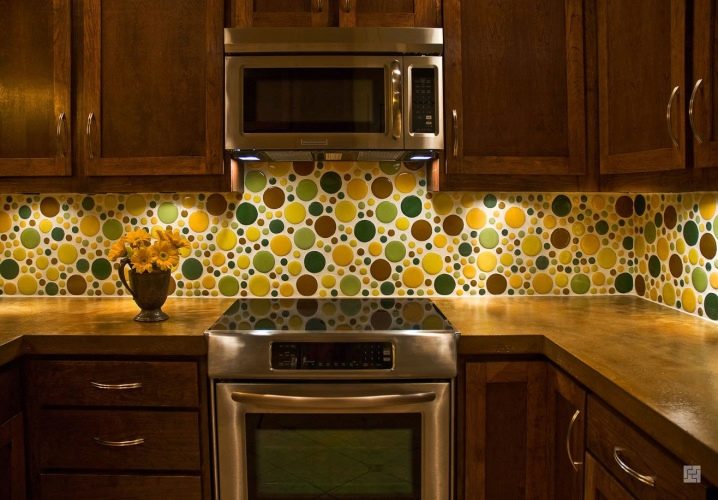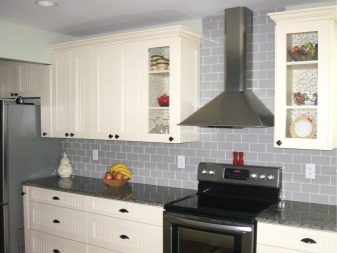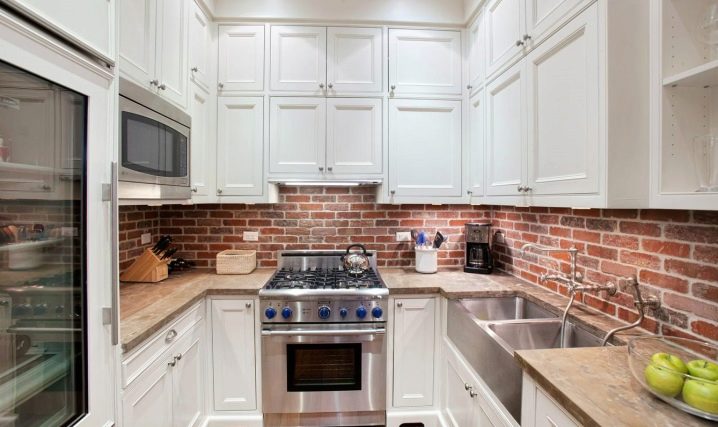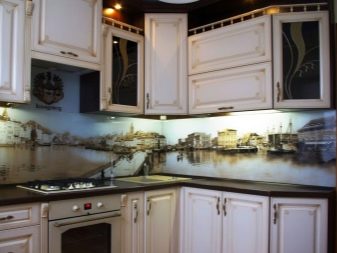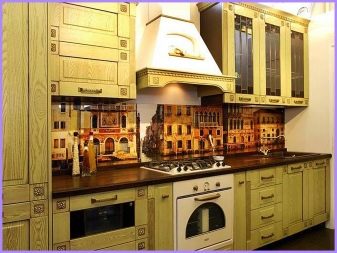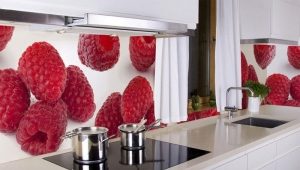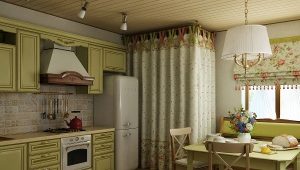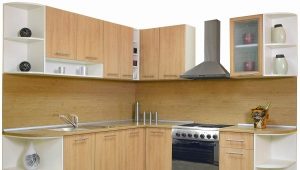Apron for classic kitchen
If you choose a kitchen in a classic style, then it is the “apron” that can become the most striking design element in it. The tile, porcelain tile, mosaic, glass - in any embodiment, an apron for a classic kitchen will protect the walls and decorate the interior.
"Classic" in the design of the kitchen
The classic style in the interior is characterized by simplicity of forms, the absence of complex lines. It is very difficult to miscalculate with the classics - the chances of “spoiling” the room are almost zero. It is always relevant and absolutely acceptable for everyone.
Designers tend to believe that the “classic” style is something historical. For example, Rococo, Baroque, Empire. Often under the definition of "classic" interiors in the style of Provence. All these areas, of course, are included in the concept of "classics". But if we consider modern furniture production, then any kind of traditional cuisine will be called “classic” - without obvious traits of pretentiousness or high-tech.Functional, comfortable, elegant furnishings without a touch of luxury - this is what today is considered a “classic”.
At the same time, the classic style easily “absorbs” elements of other directions. With him, as with neutral black pants, you can combine any "bright spots."
"Classic" kitchen - it is usually set in a row or corner. Classic involves the use of natural materials, but in most cases, wood, for example, is replaced by cheaper chipboard or MDF board.
Very often in modern classical headsets there is a “frame” facade, when the frame of the facade is made of solid wood, and the middle one - “panel” - of MDF. It is usually covered with veneer of the same wood type as the frame. This allows you to reduce the cost of production. Instead of a panel, a decorative lattice or stained glass window can be inserted. On the reverse side, such a facade is covered with the same veneer (a more expensive option), or is laminated with a film.
The most inexpensive version of the classic facade is completely made of chipboard / MDF. These headsets look quite decent, because the plates are perfectly served by milling and can be richly decorated.In the most status models, all the doors and enclosures are made of solid wood.
The color range of classic kitchens is predominantly light. These are white, dairy, beige shades, and also - sand, nut, cognac, gray.
Types of materials and design
Kitchen apron is located on the walls between the upper and lower cabinets headset. In the kitchen, it is necessary to protect the walls from drops of fat, water, pieces of food and other contaminants. If the budget allows, an apron can be made around the perimeter of the kitchen: for example, in the area of the dining table pollution is also quite likely. But most of the owners are limited to the working area. In variants of economy class, an apron is made at least near the stove and sink.
By standards, the height of the kitchen apron must be at least 60 centimeters. At the same time, he should go under the headset a little above, so that at the junction with the furniture a hollow is not formed (garbage will quickly accumulate there). The bottom line of furniture with an apron bottom is strengthened with a special plinth and filled with silicone sealant. By the way, if your kitchen design project does not involve wall cabinets, then the apron can be made very high, turning it into an element of decor.
However, the decorative function of the apron is difficult to deny. The blessing that modern materials allow to make it:
- Immune to moisture
- Heat resistant
- Easy to clean with any household cleaning products.
These properties have ceramic tiles (including tiled), glass, plastic. There are options for making aprons from natural stone or solid wood, but these materials require very careful maintenance.
The apron from a tile beats all records of popularity in the Russian kitchens and perfectly fits into classical style of registration. Classic does not imply serious contrasts - if you choose a white headset and a black apron, then black should be supported, for example, with chairs, or with the color of the floor covering. More often designers of classic kitchens offer to make an apron exactly to match the furniture, or at least in one color. For example, a white, milky apron is suitable for a bright kitchen in beige tones, and a brown apron for a contrasting combination.
For a classic interior, you can choose any type of masonry you like. The simplest ones are the “seam in the seam” (square tiles are clearly one below the other), diagonal (square tiles are laid with “diamonds”), a combination of directly laid tiles and “diamonds”.
It fits very well into the “classics” cling-in laying - from narrow rectangular tiles, which builders sometimes call “hogs”. The tiles in each row are displaced exactly by half of the tiles from the previous row - a brickwork pattern is formed on the wall. This way you can lay tiles and vertically - this is a good reception for rooms with low ceilings. Also popular is the technique to lay out the "hog" strip - that is, to lay them exactly under each other, but using different colors of tiles.
A unique Christmas tree tile will give your kitchen a unique style (long rectangular blanks are used). This clutch can be further emphasized by making the grout contrasting in color at the joints.
Mosaic looks very expensive and elegant in the kitchen - very small colored squares. It can be quite bright, but its tones should repeat those used in the interior. This mosaic put only experts. For self-laying you can buy large tiles with a mosaic pattern or mosaic on the grid. By the way, it is very popular to use mosaic as an accent: for example, the main part of the apron is lined with large tiles,and a mosaic strip is made in the center.
In the classics, both monochrome kitchen aprons and accents are popular. You can lay out the apron two-tone tiles of contrasting shades (black and white, like chess). In the direct layout, there are often options with inserts: a monochrome apron in which tiles with pictures on a “kitchen” theme are inserted: vegetables and fruits, inscriptions, flowers, etc.
A very worthy and truly “classic” version is a diagonally laid tile of small size and a decorative panel on ceramics.
In neoclassicism there are variants with a “kaleidoscope” - when tiles of different colors are laid out chaotically or “incrementally”.
Remember that for a small kitchen a small tile is best suited (for example, a tile with a side of 10 cm square). Large square or rectangular tiles “steal” your space.
Economy class options - plastic aprons. Or rather, from PVC plates. Often, visually, they look more expensive than any other due to the fact that plastic easily imitates the texture of any material: brick, natural stone, tile, mosaic. Plastic is easy to maintain and install. It is attached to the glue to the wall or on special rails.The most important thing is to find out what the maximum temperature is maintained by the plates: not all of them are suitable for use near the plate. It is best to use plastic ABC for these purposes.
An apron made of glass (it is called “skinali”) looks very modern. In practicality and ease of care, it surpasses all other options! It can easily fit into the classic style of the kitchen. It can be monochromatic frosted or glossy glass, illuminated glass, printed glass. Figure must be selected on the basis of the general concept of design. These can be flowers, landscapes, large photos of products or spices, “aged” and retro pictures, written inscriptions, etc. To make your kitchen in a classic style unique, you can make skinali with your own photos or other images that are dear to you personally.
